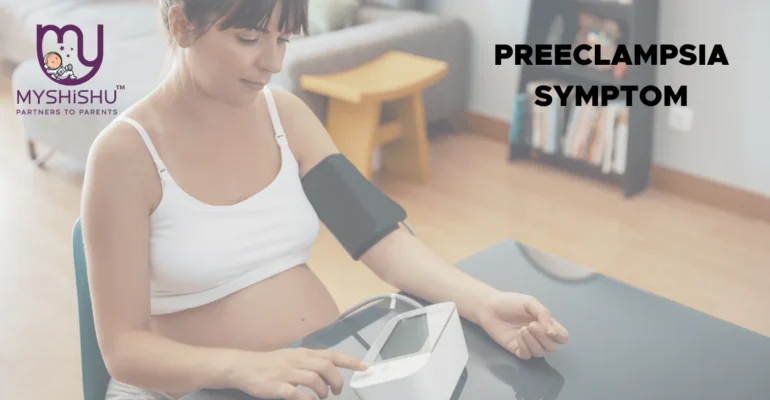Preeclampsia Symptom: Warning Sign and Prevention
Preeclampsia Symptom: Warning Sign and Prevention
Introduction
Preeclampsia symptom, a term that may seem intimidating at first, holds the key to a healthier and more empowered pregnancy. As an expectant mother, understanding preeclampsia is not just a necessity but a superpower that ensures a smoother journey. In this comprehensive guide, we’ll unravel the intricacies of preeclampsia—its symptoms, causes, management, and treatment. Join us on this insightful expedition where knowledge becomes your ally, positivity lights the way, and the preeclampsia symptom stands as the beacon to guide you through the empowering path of motherhood. Let’s embark on this transformative journey together.
What is preeclampsia symptom?
Preeclampsia symptom, a term that might initially sound like medical jargon, is a crucial aspect of pregnancy that demands attention and understanding. Simply put, it’s a condition characterized by elevated blood pressure and organ damage, typically making its presence felt after the 20th week of pregnancy. This isn’t just about numbers on a blood pressure monitor; it’s about navigating a complex interplay of factors that can impact both the expectant mother and the precious life growing within.
Beyond the medical definitions, preeclampsia symptom often reveals itself through symptoms like swelling, persistent headaches, and vision changes. Think of it as your body signaling that something needs attention during this miraculous journey of creating new life. So, let’s embark on a journey of comprehension, demystifying the intricacies of preeclampsia, and embracing the knowledge that empowers us to face it with strength and resilience.
What Happens When We Get It?
Preeclampsia symptom, marked by elevated blood pressure exceeding 140/90 mm Hg and organ damage after the 20th week of pregnancy, introduces a complex interplay of effects. Sudden spikes in blood pressure stress vital organs, particularly the liver and kidneys, while proteinuria signals potential kidney dysfunction. Swelling, notably in the hands and face, adds another layer to this intricate scenario. Beyond the clinical aspects, preeclampsia reshapes the pregnancy narrative, demanding vigilant monitoring and proactive management to safeguard both mother and baby. Understanding the implications is the first step towards facing this challenge with resilience and informed decision-making.
How common is preeclampsia? Unveiling the Statistics
Preeclampsia symptom isn’t a rare occurrence, affecting approximately 5–8% of pregnancies globally. While the majority of cases are mild, the condition’s prevalence underscores its significance for maternal health. Factors such as a first-time pregnancy, multiple pregnancies (twins, triplets), or pre-existing conditions can elevate the risk. Regular prenatal check-ups and awareness play pivotal roles in early detection and effective management, ensuring a healthier pregnancy journey for both mother and baby.
Who gets preeclampsia? Unraveling the Risk Factors
Preeclampsia symptom doesn’t discriminate; it can affect any pregnant woman, but certain factors elevate the risk. First-time pregnancies, women carrying multiple babies (twins, triplets), and those with pre-existing conditions such as high blood pressure, diabetes, or kidney disease are more susceptible. Age also plays a role, with women under 20 and over 40 facing higher risks. While these factors heighten vulnerability, preeclampsia’s unpredictability underscores the importance of vigilant monitoring and early intervention for all expectant mothers.
Symptoms and Causes of Preeclampsia: Navigating the Complex Landscape

Symptoms:
Preeclampsia symptom often whispers its presence through subtle yet crucial signals:
- Elevated blood pressure: The hallmark symptom, with readings surpassing 140/90 mm Hg, demands close monitoring.
- Proteinuria: Excessive protein in the urine, indicative of potential kidney issues, is a key diagnostic factor.
- Swelling (edema): Notably in the hands and face, swelling reflects fluid retention, a common preeclampsia manifestation.
- Headaches and Vision Changes: Persistent headaches and alterations in vision, like blurriness or light sensitivity, signal potential complications.
- Abdominal Pain: Severe pain in the upper abdomen may signify liver involvement, requiring immediate attention.
Severe symptoms also include:
- Severe hypertension: blood pressure soaring to dangerously high levels, posing an immediate risk to both mother and baby.
- Organ Dysfunction: Advanced cases may lead to organ dysfunction, particularly affecting the liver and kidneys.
- Seizures (Eclampsia): In the most severe instances, preeclampsia symptoms can progress to eclampsia, marked by seizures, demanding emergency medical intervention.
Causes:
While the precise origins remain elusive, several factors contribute to preeclampsia:
- Placental Issues: Insufficient blood supply or poor implantation can trigger preeclampsia.
- Blood Vessel Problems: Abnormalities in blood vessels may restrict proper blood flow, initiating the condition.
- Immune System Factors: An atypical immune response to pregnancy may contribute to the onset of preeclampsia.
Understanding these symptoms and causes empowers expectant mothers and healthcare providers to navigate preeclampsia’s complexities with awareness and proactive care.
1. What causes preeclampsia symptoms? Unraveling the Enigma
Preeclampsia’s origins remain complex, with no single cause identified. However, several factors contribute to its development:
- Placental Issues: Preeclampsia often stems from problems with the placenta, such as inadequate blood supply or improper implantation.
- Blood Vessel Abnormalities: Aberrations in blood vessels may restrict proper blood flow, triggering the cascade of events leading to preeclampsia.
- Immune System Factors: An atypical immune response to pregnancy can play a role in the onset of this condition.
Understanding these contributing factors helps demystify the development of preeclampsia, paving the way for proactive monitoring and management.
2. In What Week Does Preeclampsia Start? Unveiling the Timetable
Preeclampsia symptom typically makes its presence known after the 20th week of pregnancy. While it can develop earlier, this mid-pregnancy timeframe is a critical period for vigilance. Regular prenatal check-ups become even more crucial during this stage, allowing healthcare providers to monitor blood pressure, detect symptoms, and intervene promptly if preeclampsia symptoms are suspected. Expectant mothers can navigate this period with heightened awareness and proactive care by staying informed and maintaining regular medical appointments.
3. Does preeclampsia affect the baby? Navigating the Impact
Yes, preeclampsia can indeed affect the baby, and its impact can extend beyond the expectant mother’s health.
- Restricted Fetal Growth: Inadequate blood flow to the placenta may hinder the baby’s growth.
- Preterm Birth: Preeclampsia symptom increases the risk of preterm birth, posing potential challenges for the baby’s health.
- Low Birth Weight: Insufficient nutrient and oxygen supply may lower birth weight.
While the severity of these effects can vary, early detection, proper management, and close medical supervision play crucial roles in minimizing risks and promoting a healthier outcome for both mother and baby.
Diagnosis and Testing for Preeclampsia: Unraveling the Detective Work
Diagnosis:
Diagnosing preeclampsia involves a multi-faceted approach, combining medical history, physical examinations, and various tests:
- Blood Pressure Monitoring: Regular blood pressure checks help identify persistent elevations, a primary indicator of preeclampsia.
- Urine Tests for Proteinuria: Assessing urine for excess protein is a key diagnostic element, pointing to potential kidney dysfunction.
- Blood Tests: Comprehensive blood tests evaluate organ function and may reveal abnormalities associated with preeclampsia symptoms.
- Ultrasound Examinations: Monitoring fetal growth and assessing placental health through ultrasounds provides valuable insights.
- Other Diagnostic Measures: Additional tests may be recommended based on individual circumstances, ensuring a comprehensive evaluation.
Testing:
- Non-Stress Test (NST): This monitors the baby’s heart rate in response to its movements, gauging fetal well-being.
- Biophysical Profile (BPP): Combining ultrasound with the NST, the BPP assesses fetal movements, muscle tone, breathing, and amniotic fluid levels.
- Doppler Ultrasound: This test assesses blood flow through the umbilical cord, providing insights into placental function.
- Lab Tests: Regular blood and urine tests help track changes in organ function and protein levels, aiding in ongoing management.
Navigating the diagnostic journey involves a collaborative effort between expectant mothers and healthcare providers. Regular check-ups and timely testing ensure early detection and effective management, empowering both parties to make informed decisions for a healthier pregnancy journey.
Management and Treatment of Preeclampsia: Guiding the Path to Wellness
Management:
- Regular prenatal check-ups: Consistent monitoring of blood pressure, urine protein levels, and overall symptoms is fundamental for early detection.
- Bed Rest and Activity Modification: Healthcare providers may recommend modified activity or bed rest to manage symptoms and reduce stress.
- Medications: Prescription medications, such as antihypertensives, may be utilized to control blood pressure and prevent complications.
- Hospitalization: Severe cases may necessitate hospitalization for closer observation and intensive care.
Treatment:
- Delivery of the Baby: In severe cases or when the mother and baby’s health are at risk, delivering the baby may be the most effective treatment.
- Corticosteroids: Administering corticosteroids may be recommended to accelerate fetal lung development in preparation for early delivery.
- Magnesium Sulfate: This medication is often used to prevent or treat seizures in cases of severe preeclampsia or eclampsia.
- Close Monitoring: Continuous monitoring of the mother and baby’s health is essential during treatment, ensuring timely adjustments to the care plan.
Navigating the management and treatment of preeclampsia symptoms involves a delicate balance between addressing immediate concerns and considering the best outcome for both the mother and baby. A collaborative approach between healthcare providers and expectant mothers ensures comprehensive care, promoting the well-being of all parties involved.
Is there a cure for preeclampsia? Navigating Reality
As of now, there is no definitive cure for preeclampsia symptoms. However, early detection, vigilant monitoring, and prompt medical intervention significantly improve outcomes. Effective management through medications, lifestyle adjustments, and, in severe cases, early delivery of the baby, can control symptoms and reduce risks. The focus shifts towards providing comprehensive care, ensuring the safety of both the expectant mother and the baby. Ongoing research aims to deepen our understanding, offering hope for more targeted treatments in the future.
Here’s a little video to address some of the more typical pregnancy concerns.
Preventing Preeclampsia: Empowering a Healthy Pregnancy
While there’s no foolproof method to prevent preeclampsia symptoms, certain measures can significantly reduce the risk:
- Regular Prenatal Check-ups: Attending regular check-ups allows for early detection and proactive management if signs of preeclampsia emerge.
- Healthy Lifestyle: Adopting a balanced diet, staying physically active, and maintaining a healthy weight contribute to overall well-being and may reduce the risk.
- Early Intervention: If preeclampsia is detected, early medical intervention and proper guidance play a pivotal role in minimizing risks and ensuring a healthier pregnancy journey.
Empowering yourself with knowledge and embracing a proactive approach is key to reducing the risk of preeclampsia and fostering a positive pregnancy experience.
Overview of Post-Delivery Symptoms: Navigating Towards a Positive Recovery
Post-Delivery Symptoms:
- Continued Hypertension: In some cases, elevated blood pressure may persist after delivery, requiring continued monitoring and management.
- Organ Function Recovery: Organs affected during preeclampsia, such as the kidneys and liver, typically recover post-delivery. Regular check-ups ensure proper healing.
- Edema Resolution: Swelling, a common symptom, usually resolves after childbirth as excess fluid is gradually eliminated from the body.
- Blood Pressure Monitoring: Ongoing blood pressure checks remain crucial in the post-delivery period, ensuring stability and preventing complications.
While post-delivery symptoms may persist for a short period, a proactive approach to monitoring and managing these symptoms, coupled with medical guidance, contributes to a positive recovery for both the mother and baby.
Increased Risks After Delivery:
- Postpartum Preeclampsia: Some women may experience preeclampsia symptoms even after delivery. Early recognition and medical attention are crucial in managing postpartum preeclampsia symptoms.
- Cardiovascular Risks: Women who have preeclampsia have an increased risk of long-term cardiovascular issues. Lifestyle modifications and regular health check-ups are essential.
- Kidney Function: Preeclampsia may impact long-term kidney health. Monitoring kidney function through regular check-ups aids in the early detection of potential issues.
While increased risks persist after delivery, proactive monitoring and adherence to medical guidance significantly contribute to a positive recovery and long-term well-being for both the mother and baby.
Does preeclampsia go away after delivery? Navigating postpartum realities
In most cases, preeclampsia symptoms start to resolve after delivery. Blood pressure typically returns to normal, and organ functions, affected during preeclampsia, gradually recover. Swelling (edema) tends to diminish postpartum. However, some women may experience postpartum preeclampsia, a condition where symptoms persist or arise after childbirth. Regular postpartum check-ups are crucial for monitoring blood pressure and ensuring a smooth recovery. While the majority see resolution, ongoing medical attention remains vital for optimal postpartum health.
When Should You Contact Your Health Care Provider?
These signs could indicate serious complications related to preeclampsia symptoms, such as eclampsia. Don’t delay; contact your healthcare provider or head to the emergency room promptly for a thorough evaluation and necessary intervention. Prioritizing swift action ensures the safety and well-being of both you and your baby.
Symptoms like:
- Twitching or convulsing
- Shortness of breath
- Sharp pain in the right side of your abdomen
- Blurry vision
- A persistent and severe headache
- Dark spots in your vision that don’t fade
Questions You Can Ask Your Health Care Provider
- What is preeclampsia, and how does it impact pregnancy?
- What are the common symptoms of preeclampsia, and how should I monitor them?
- Are there lifestyle changes or preventive measures I can take to reduce the risk of preeclampsia?
- If diagnosed with preeclampsia, what treatment options are available?
- How does preeclampsia affect the baby’s development and health?
FAQs on Preeclampsia Symptoms
Here are a few of the most-asked questions about preeclampsia symptoms
-
What are the primary symptoms of preeclampsia during pregnancy?
The main symptoms include elevated blood pressure, proteinuria (excessive protein in urine), swelling (especially in hands and face), persistent headaches, vision changes, and abdominal pain.
-
How can I distinguish common pregnancy discomforts from potential preeclampsia symptoms?
While some symptoms like swelling can be common, persistent and severe symptoms, such as intense headaches or vision changes, should raise concerns and prompt a call to your healthcare provider.
-
Are there specific warning signs that indicate an immediate need for medical attention?
Yes, symptoms like seizures, severe abdominal pain, or shortness of breath require urgent medical attention. These may signify severe complications like eclampsia.
-
Do the symptoms of preeclampsia vary in severity, and how can I gauge the urgency of seeking medical help?
Yes, symptoms can vary. Severe headaches, vision changes, and intense abdominal pain are urgent signs. Regular monitoring and contacting your healthcare provider for any concerning changes are crucial.
-
Are there lifestyle factors or habits that may contribute to or alleviate preeclampsia symptoms during pregnancy?
Maintaining a healthy lifestyle, including a balanced diet, regular exercise, and attending all prenatal check-ups, can contribute to overall well-being and potentially reduce the risk of preeclampsia. Always consult your healthcare provider for personalized advice.
Conclusion
In the intricate landscape of pregnancy, understanding and managing preeclampsia emerge as vital elements for both mothers and babies. From decoding the symptoms and causes to exploring prevention strategies and seeking timely medical attention, this journey is marked by vigilance, resilience, and empowered decision-making. As we conclude this exploration, remember that knowledge is your ally. Embrace regular check-ups, stay informed, and engage openly with your healthcare provider. With proactive measures, a supportive medical team, and a positive mindset, the preeclampsia journey can be navigated with strength, ensuring a healthier and more confident passage into motherhood.












